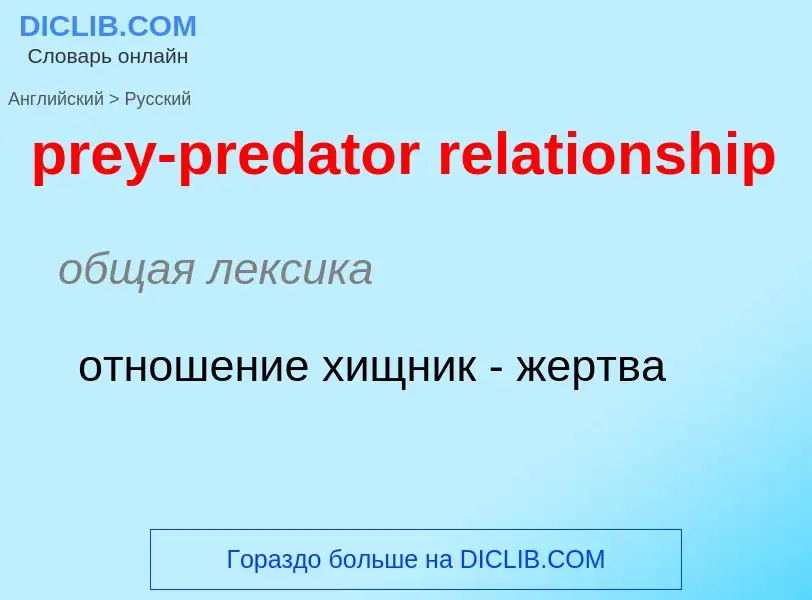Vertaling en analyse van woorden door kunstmatige intelligentie ChatGPT
Op deze pagina kunt u een gedetailleerde analyse krijgen van een woord of zin, geproduceerd met behulp van de beste kunstmatige intelligentietechnologie tot nu toe:
- hoe het woord wordt gebruikt
- gebruiksfrequentie
- het wordt vaker gebruikt in mondelinge of schriftelijke toespraken
- opties voor woordvertaling
- Gebruiksvoorbeelden (meerdere zinnen met vertaling)
- etymologie
prey-predator relationship - vertaling naar russisch
общая лексика
отношение хищник - жертва
общая лексика
модель "хищник - жертва" (математическая модель гуморального иммунного ответа на метаболизирующие антигены)
математика
модель хищник-жертва
общая лексика
хищник
стоящий во главе трофической цепи
Definitie
Wikipedia

The Lotka–Volterra equations, also known as the predator–prey equations, are a pair of first-order nonlinear differential equations, frequently used to describe the dynamics of biological systems in which two species interact, one as a predator and the other as prey. The populations change through time according to the pair of equations:
where- x is the number of prey (for example, rabbits);
- y is the number of some predator (for example, foxes);
- and represent the instantaneous growth rates of the two populations;
- t represents time;
- α, β, γ, δ are positive real parameters describing the interaction of the two species.
The Lotka–Volterra system of equations is an example of a Kolmogorov model, which is a more general framework that can model the dynamics of ecological systems with predator–prey interactions, competition, disease, and mutualism.



![''[[Anomalocaris]]'' was an apex predator in the [[Cambrian]] seas.<ref name=Callaway2011/> ''[[Anomalocaris]]'' was an apex predator in the [[Cambrian]] seas.<ref name=Callaway2011/>](https://commons.wikimedia.org/wiki/Special:FilePath/20191203 Anomalocaris canadensis.png?width=200)
![[[Human]]s sometimes live by hunting other animals for food and materials such as fur, sinew, and bone, as in this [[walrus]] hunt in the Arctic, but their status as apex predators is debated. [[Human]]s sometimes live by hunting other animals for food and materials such as fur, sinew, and bone, as in this [[walrus]] hunt in the Arctic, but their status as apex predators is debated.](https://commons.wikimedia.org/wiki/Special:FilePath/21 Walrus Hunt 1999.jpg?width=200)
![boar]] hunt. boar]] hunt.](https://commons.wikimedia.org/wiki/Special:FilePath/37-svaghi, caccia,Taccuino Sanitatis, Casanatense 4182..jpg?width=200)
![The [[wolf]] is both an apex predator and a [[keystone species]], affecting its prey's behaviour and the wider ecosystem. The [[wolf]] is both an apex predator and a [[keystone species]], affecting its prey's behaviour and the wider ecosystem.](https://commons.wikimedia.org/wiki/Special:FilePath/Canis lupus pack surrounding Bison.jpg?width=200)
![The reintroduction of predators like the [[lynx]] is attractive to conservationists, but alarming to farmers. The reintroduction of predators like the [[lynx]] is attractive to conservationists, but alarming to farmers.](https://commons.wikimedia.org/wiki/Special:FilePath/Lynx Lynx (10597310204).jpg?width=200)
.jpg?width=200)

